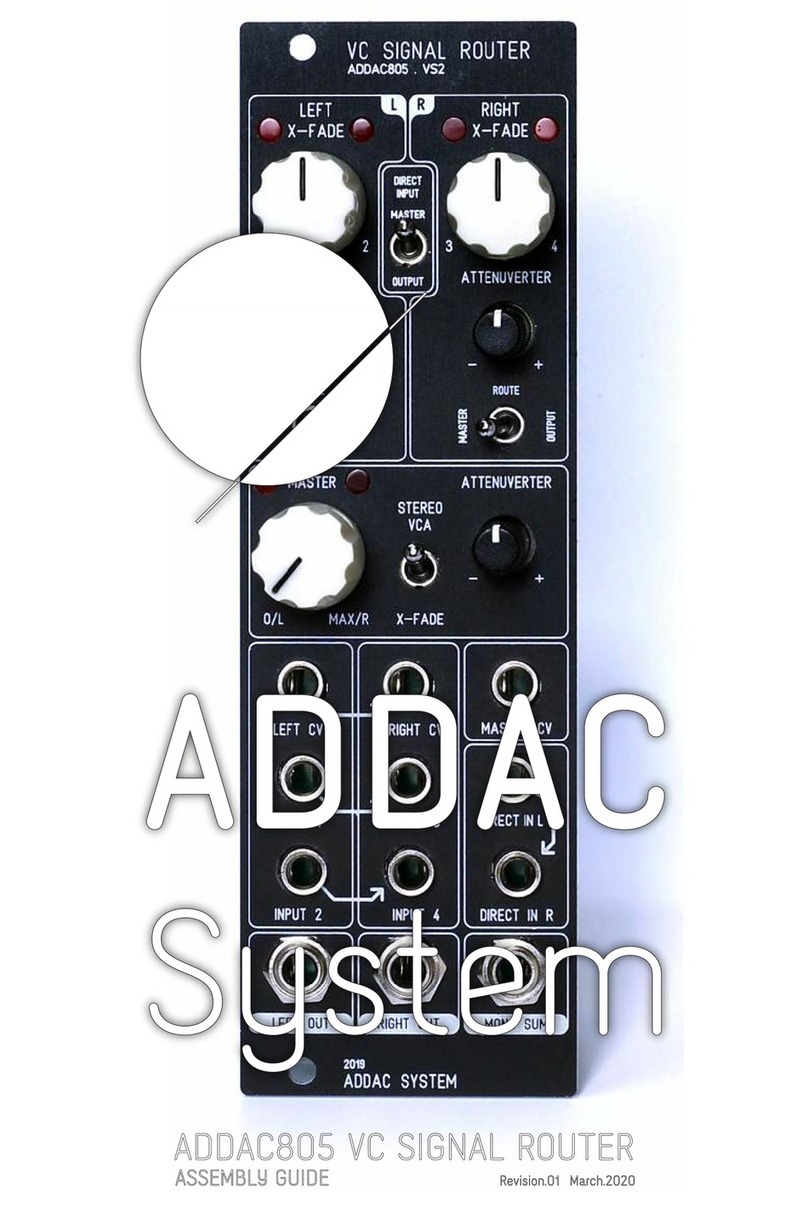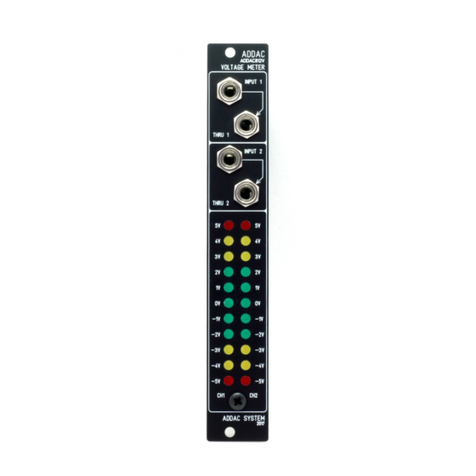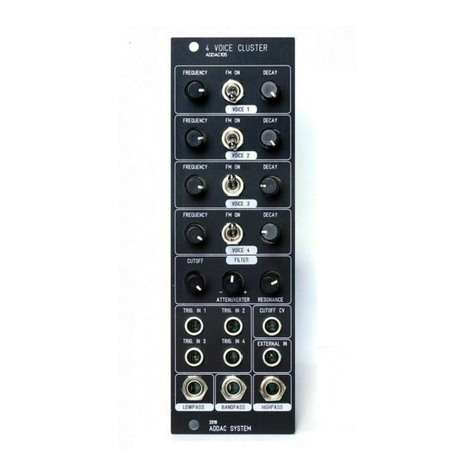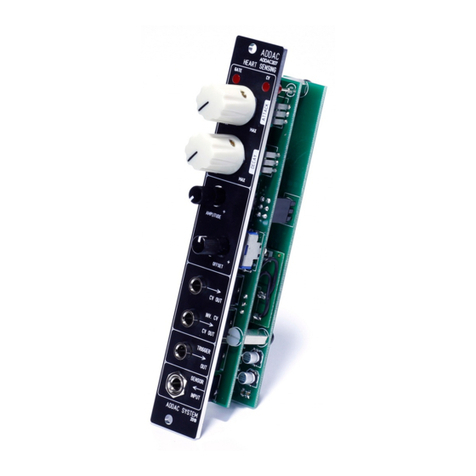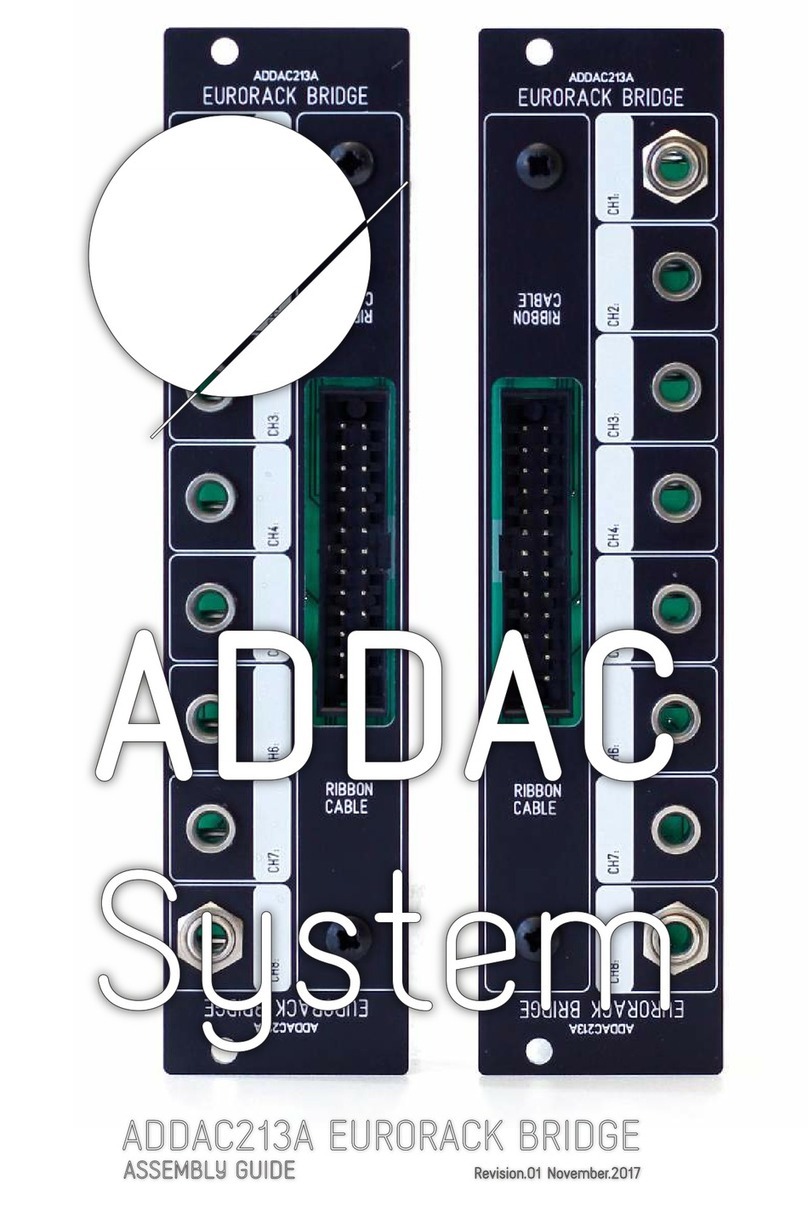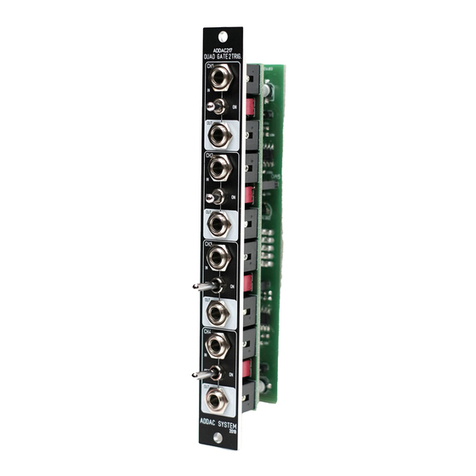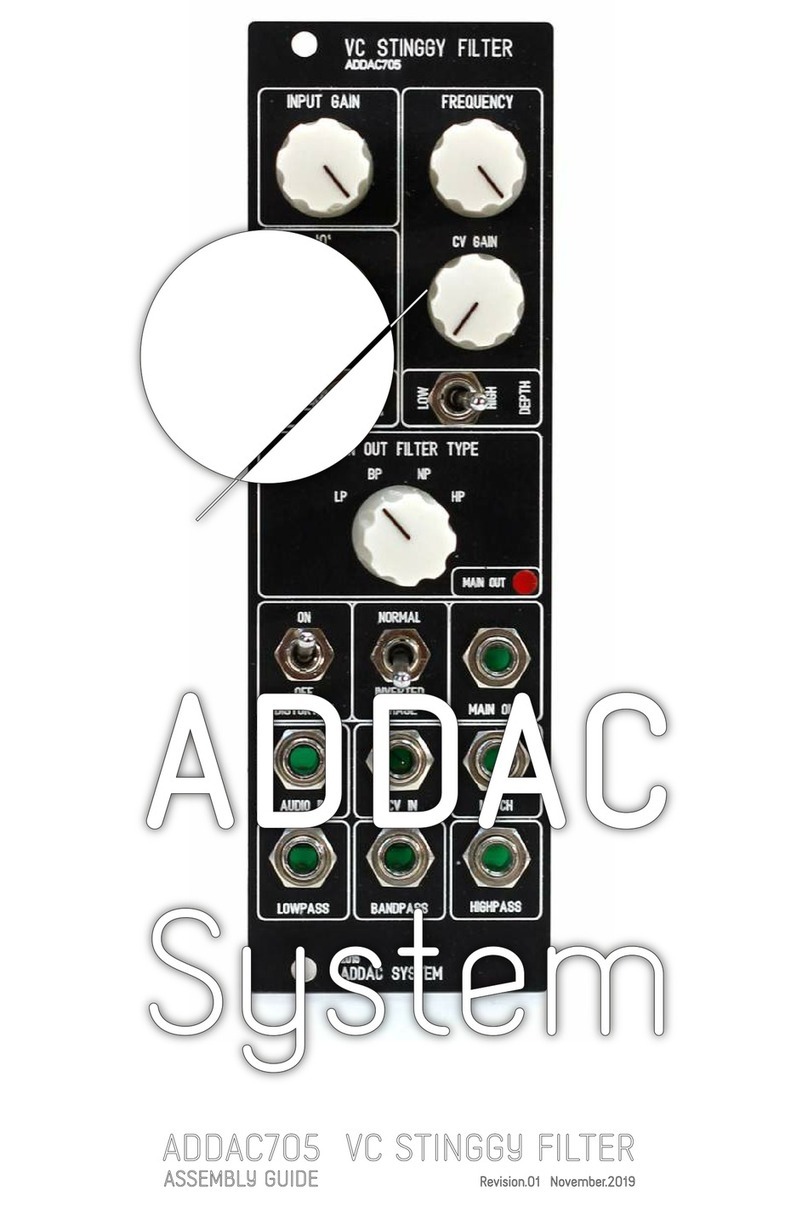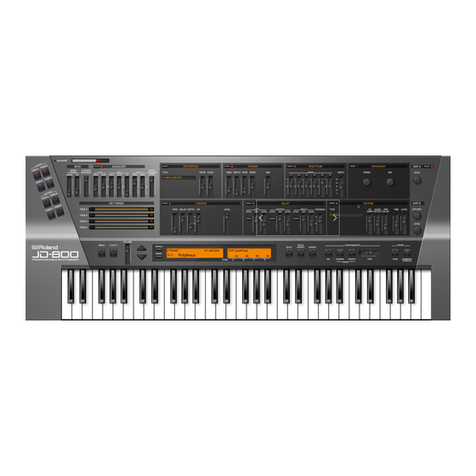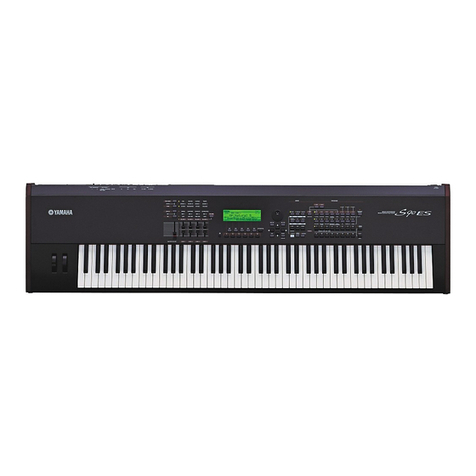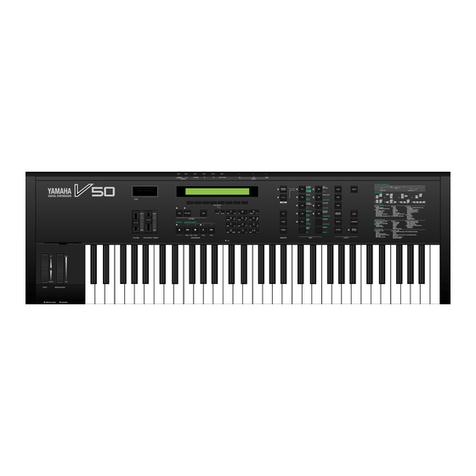page 9ADDAC SYSTEM
QUANTIZER
VOICES 1-4
There are 4 Quantization Voices, these can be used
either Independentely: when an Input is plugged in the
IN Jack or related to Voice 1: when no input is connect-
ed on either Voice 2, 3 or 4.
If no voltage input is used voices 2, 3 and 4 will
automatically relate to Voice 1.
They will then mirror Voice 1 input or be used for
Chords Generation as described in the NOTE 2/3/4
section of the Intuitive Menu chapter.
This function of Voice 1 as Master can be toggled
ON/OFF as described in the TRIG.R. menu
Each Voice features 4 jacks I/O:
IN (-5v +5v): Voltage Input for Quantization
OUT (0v +10v): Quantized Voltage Output
GATE IN (0 +5v): Trigger Input for External
Quantization timing. If this input is used it only Quan-
tizes the next note when a trigger is received.
If it’s not used then it will quantize depending to CV
changes only.
This Gate In ON/OFF detection is made in the software.
After the detection goes On, if no gate in is detected
within the next 60 seconds it will automatically go to
Off. If the user want to reset voices before the 60
seconds period Button 6 (Gate L.) can be pressed at
the same time as the voice number Button (1 to 4).
For example to Reset voice 2 Gate In, the user needs to
press Button 6 then press 2 and immediatelly release
both buttons.
This will resume the behaviour without regarding the
Gate In until a new gate in is detected.
The automatic reset can be disabled as described in
the TRIG.R. menu
GATE OUT (0 +5v): Gate Output for ADSR’s
Outputs everytime a new quantization is calculated.
It respects the incoming Trigger Input Gate, while it’s
On the Gate Out will remain On.
The Gate Out will go Off when Trigger In is Off and the
Gate Length time as passed as described in the Gate
Length section of the Intuitive Menu Chapter.
ADDAC207 INTUITIVE QUANTIZER USER’S GUIDE
April.2021Revision.05
